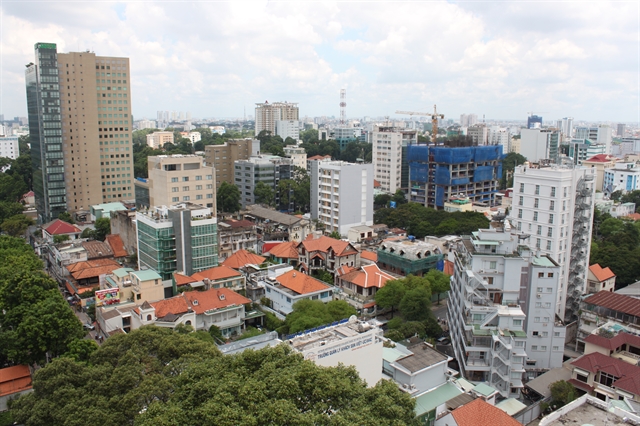Overlapping legal documents are a major obstacle in need of removal to help construction and the development of housing projects.

Overlapping legal documents are a major obstacle in need of removal to help construction and the development of housing projects.
Do Viet Chien, general secretary of the Viet Nam Real Estate Association, said enterprises face inconsistencies in regulations on investment procedures and approval of development projects between the Investment Law and Housing Law.
Therefore, it is necessary to unify procedures on approval of investment in housing and new urban development projects under the law on housing and new urban areas with procedures on granting investment registration certificates.
“The Construction Law is being revised according to three policy groups: reform and simplification of administrative procedures; simplification and abolishment of business conditions; and review of the legal system and synchronisation of laws,” Hoang Hai, head of the Ministry of Construction’s southern representative office, said.
The amended law is more open and in sync with international regulations, according to Hai. Viet Nam has combined procedures for design appraisal with construction licensing procedures for projects using capital from non-budget sources. This combination may lead to abolishment of the construction licence. This means simplifying licensing procedures.
Vo said the State should review any loopholes in the legal documents. Then, the State should issue a decree on supplementary regulations and submit it to the National Assembly Standing Committee for approval. This decree should focus on unifying regulations for an investment project.
“Ten years ago, the National Assembly had to amend and supplement a number of articles related to basic construction investment in 2003-05, including the Construction Law, the Bidding Law, the Enterprise Law, the Land Law and the Housing Law, to solve a number of conflicts,” Vo said.
Today, there are more conflicts, including the 2014 Construction Law, the 2009 Urban Planning Law, the 2014 Housing Law, the 2014 Real Estate Business Law, the 2013 Bidding Law, the 2013 Land Law, the 2014 Law on Environmental Protection and the Civil Code 2015, according to Vo.
This leads to congested investment activities, interrupted production and service value chains, and a decline in real estate supply.
The main cause of the overlaps in the current legal system is the inefficient method of law building. The process of building and appraising laws, decrees and circulars does not take advantage of the opinions of legal experts. Therefore, it is difficult to find conflicts.
Since the beginning of 2019, the real estate market has shown signs of slowing down. The private real estate business sector is growing, but faces many challenges and risks that need to be removed for its healthy and sustainable development.
Many ministries, sectors and localities have solutions for real estate businesses but there are still many risks, especially in legal documents.
The legal document system for business activities is still unreasonable. According to a review by VCCI of a number of related laws in the real estate sector, such as the Housing Law and the Real Estate Business Law, there are up to 20 policy conflicts. Circulars in the real estate sector had overlaps and contradictions, Vu Tien Loc, chairman of Viet Nam Chamber of Commerce and Industry (VCCI), said at a conference held by the Business Forum Newspaper and the Press Center in HCM City.
Le Hoang Chau, chairman of the HCM City Real Estate Association, said the real estate market in HCM City faced difficulties due to policies. Projects had been halted because of overlaps in the laws. About 170 projects had been approved for investment but could not be implemented due to legal problems.
To develop a project, a business took a total of 10 years, including five years of site clearance, three years of preparing investment capital and two years of construction. So, the State should have policies to reduce those difficulties for property businesses. — VNS





